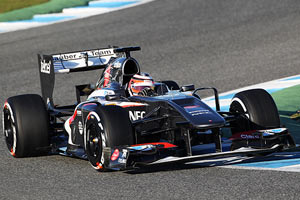Randomness wrote:
We are not talking about the DRD wing here, we are talking about the curved wing vs the flat wing. The reason for my post is that whoever it was claimed that the wing produced less downforce for the same drag. But this is simply not true.
You could be correct here.
That was the point. The curved wing collects more air in the centre of the wing.
I don't think this is correct. Maybe i'm misinterpreting your statement.
Are you saying that in the middleof the wing there is better airflow approaching the from upstream?
If you are saying this then i don't think that is the case. How can an obstructed flow with lower energy, coming off the air box, be stronger than free stream; keeping in mind that the outer parts of the wing have unobstructed flow coming from upstream?
Because this is where the air flow is stronger.
IMO it's not stronger here. It's stronger at the end plates. There is reasonable evidence to suggest the middle has a weaker flow. I could be wrong, but you have to show us some reasoning to support your case. I can use some images from 2009 season to demonstrate.
On that CFD simulation, lacking an airbox, the air reaching the wing is linear. Which means that it renders the test pretty much useless, as the wing will never be subject to airflow that is not interrupted by the airbox.
I see your point about the airbox making things less linear, but i would suspect the flow to be weaker in the middle and not stronger. There is a difference, but the wing is so relatively far away from the airbox that it is a minuscule difference.




